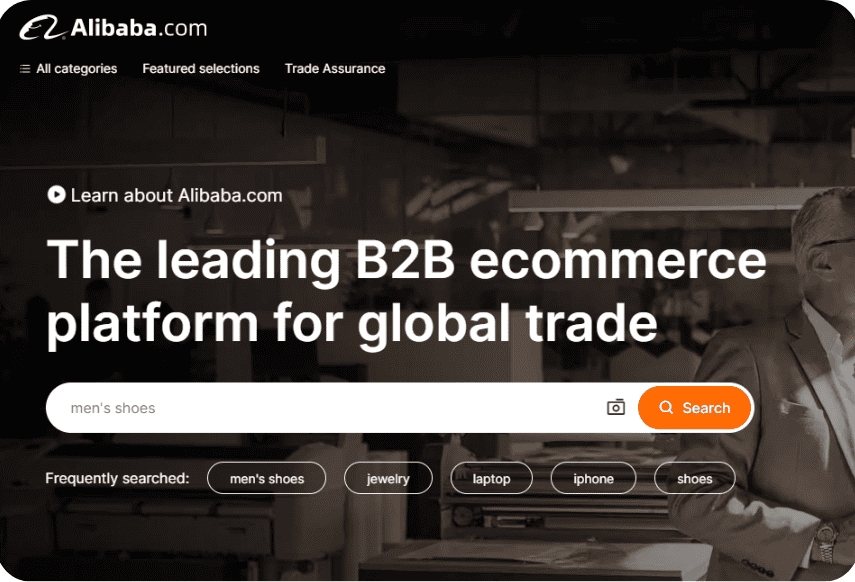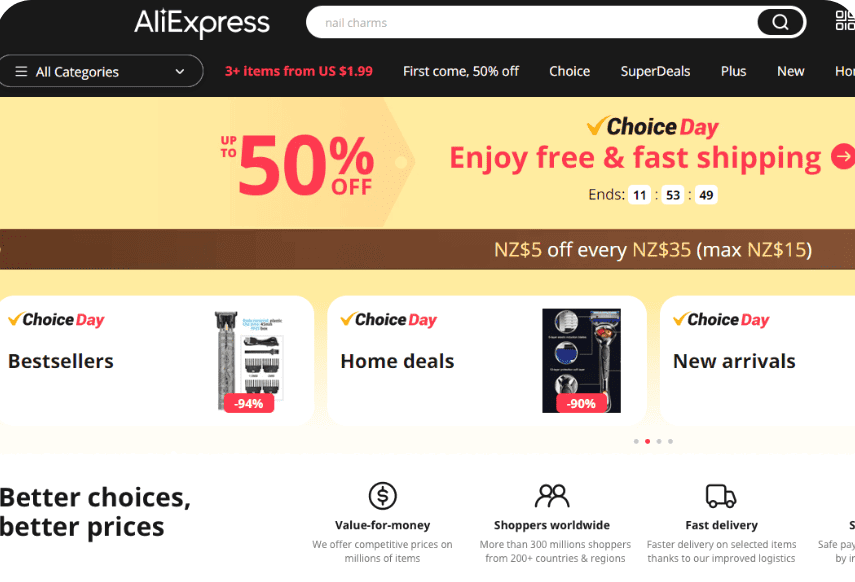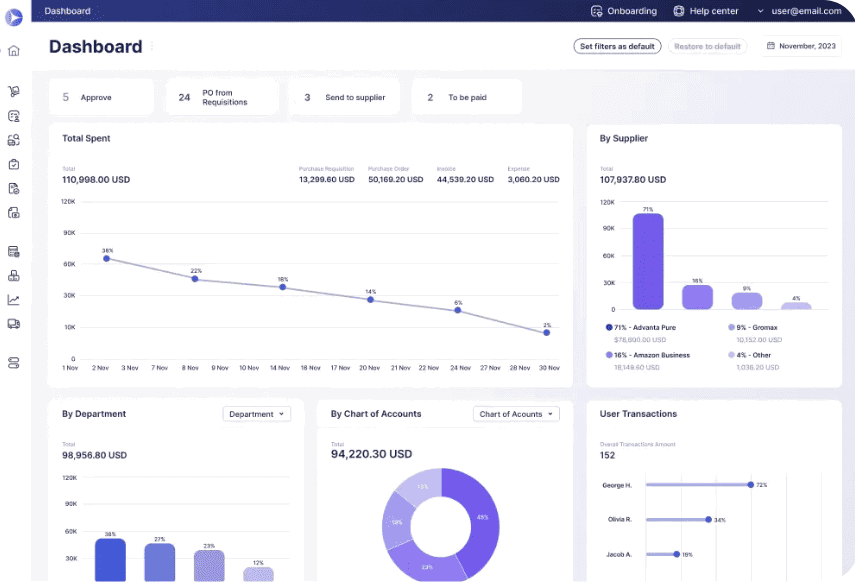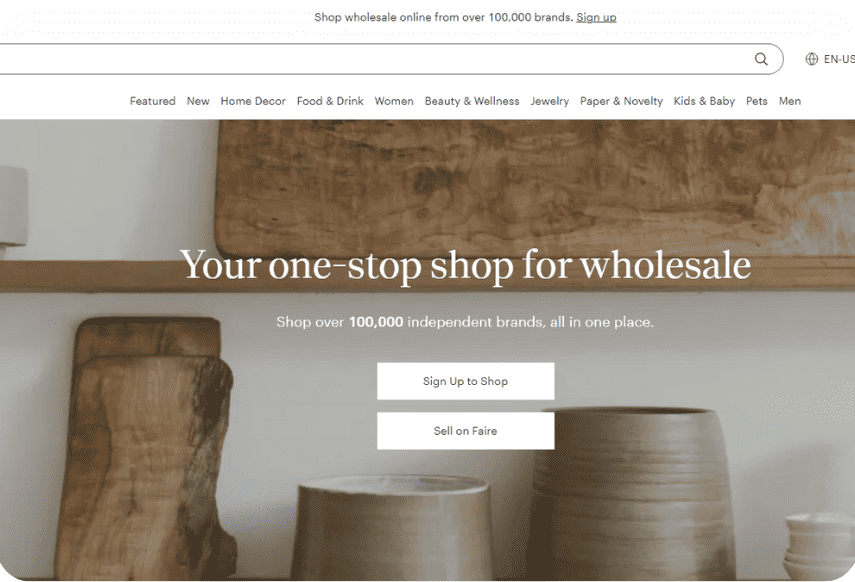
Where you buy your products from and how you find those suppliers largely determines your ceiling for success as an eCommerce merchant or retailer. Product sourcing, done the right way, can set your business up with the foundations needed for achieving maximum sales.
This guide will explain how product sourcing works in modern business, best practices for finding suppliers, and list some of the most popular websites and tools for sourcing goods to sell.
What is product sourcing?
Product sourcing is the process of finding reliable suppliers and purchasing inventory from them with the intention of reselling to customers. Suppliers are identified through various online or offline methods, such as trade shows, business-to-business marketplaces, and word of mouth.
The product sourcing process can include:
- Market research
- Product research
- Vendor procurement
- Price comparison
- Supplier negotiations
Product sourcing acts as the first and most important step in the successful execution of a business’s procurement strategy.

Where can you source products from?
Products are usually sourced from the companies or individuals that produce them – manufacturers and artisans – or a secondary link in the supply chain such as a wholesaling business or another retailer.
Manufacturers
Manufacturers are companies that produce large quantities of goods to be sold to retailers, wholesalers, and distributors for the purpose of resale.
Because manufacturing businesses are often the first link in most supply chains, they will usually be the cheapest option for sourcing products in bulk. This is also the best option if you require unique product specifications or have your own product designs you would like to see produced.
Wholesalers
Wholesalers act as a middleperson between manufacturers and the companies that sell their products directly to end customers.
If you’re looking to sell a product that’s already been established in the market, purchasing in bulk from a wholesaler can be a good option. However, they won’t be able to customise products to your preferences and you’ll be competing with other retailers selling the same items.
Dropshippers
Dropshipping is an order fulfilment method whereby the supplier ships goods directly to your customers – allowing you to operate your business without holding any physical inventory.
While dropshipping can massively reduce your operating and shipping costs, it comes with greater risks than other product sourcing methods. Namely, quality control and fulfilment status visibility are severely limited which can create poor customer experiences and lead to a higher volume of cancelled orders.
Artisans and DIY
Handcrafted products, such as those sold on online marketplaces like Etsy, can be sourced directly from the artisans that produce them. Alternatively, you could build them yourself.
While this method can be slower to acquire a high volume of goods, it’s good for small businesses dealing with smaller demand.

How to source products for your online store
The product sourcing process begins with understanding the market and deciding which products to sell. You’ll then need to seek out vendors, compare samples and pricing, and negotiate contracts with your chosen vendor.
1. Conduct product research
Before you can start looking for viable vendors, you’ll need to settle on which products you’re going to sell.
If you’ve already got an established store your research should begin with your customers.
What other offerings might they be interested in? Are there trends in your data that paint a picture of the types of products most likely to get sales? Could your existing products be further developed?
Here are some quick tips for conducting successful product research:
- Dive into competitor reviews to discover which aspects of their products customers love and which can be improved upon.
- Conduct a thorough market analysis comparing products against similar solutions on the market.
- If the market is saturated for a product, consider unique selling points that could make yours stand out such as new features or better pricing.
2. Identify potential suppliers
Once you’ve settled on a product you can start the procurement process.
This step involves identifying suppliers, inquiring about their products, and requesting quotes.
We’ll cover some effective ways for you to source and compare vendors shortly.
For now, here are some of the most popular ways to find and compare suppliers:
- Online marketplaces
- Trade shows
- Phone directories
- Etsy wholesale
- Personal recommendations
In some cases, it’s possible to create an RFQ (Request for Quote) – a document inviting companies to submit price quotes and place bids on your job.
This encourages competitive pricing and is useful for understanding what prices you might expect to pay for certain products.
3. Request samples and compare pricing
Next comes one of the most important steps in product sourcing: acquiring samples of the product.
Most suppliers will offer free or discounted samples so that you can test the product’s quality and design to determine whether it will suit your requirements. It also provides an opportunity to test how easy it is to communicate with each supplier and how quickly they’re able to fulfil an order.
When comparing samples, make notes of the pros and cons of each product. Run these side by side with the notes from your product research.
Is there a standout item that fits the description of what customers are looking for?
4. Evaluate suppliers and negotiate contracts
The bad news is that no supplier is perfect – and you might not discover their flaws until you’ve been buying from them for a while. That’s why monitoring how efficiently your vendors are performing is so important.
Analyse key supplier performance metrics such as:
- OTIF (on-time, in full)
- Average lead time
- Defect rate
- Product availability
- Purchase order cycle time
These will help you understand which suppliers perform better than others. You’ll also be able to pick up on when a specific vendor’s performance is dropping.
Once you’ve been working with a supplier for a while, you can use this data in conjunction with information from alternative suppliers to negotiate better contracts and reduce your costs of doing business.
Unleashed inventory management software is a powerful tool for tracking supplier performance. It enables you to sync your purchase orders and sales data, compare trends, and identify underperforming suppliers at a glance.
Get started today with a free 14-day trial of Unleashed.
Best apps and websites for sourcing products
There are dozens of tools and platforms you can use for sourcing products. We’ve collated a few of the best ones, but don’t be afraid to browse software review sites such as Capterra and G2 to discover more options.
Alibaba

Alibaba.com is a giant online marketplace for business-to-business sales, with over 200,000 suppliers across 5,900 product categories. The website is run by parent company Alibaba, a Chinese multinational tech company that dominates the eCommerce space.
As the Harvard Business Review puts it: “Alibaba does what Amazon, eBay, PayPal, Google, FedEx, wholesalers, and a good portion of manufacturers do in the United States, with a healthy helping of financial services for garnish.”
All you need to know is that, if you’ve got a product you want to sell, there will almost certainly be a vendor on Alibaba.com that can supply it.
Compare ratings, submit an RFQ to get offers from multiple suppliers, and shop around to get a feel for what’s out there.
AliExpress

AliExpress can be described as Alibaba.com’s dropshipping cousin.
It’s an online marketplace where Western consumers can purchase products from Eastern suppliers (typically for much lower prices) and businesses can work with dropshipping suppliers to avoid holding inventory in their own facilities.
While it’s best known for dropshipping, AliExpress can also be a useful platform for testing new products cheaply. This is because most items do not have a minimum order quantity, unlike typical wholesale or manufacturing sales.
Precoro

Precoro is procure-to-pay software that helps you streamline product sourcing and automate some of your spending workflows. It enables you to create, track, and manage your product sourcing documents such as requests for proposals, purchase requisitions, and supplier information in a single location.
While it may not help you find new suppliers, Precoro is useful for managing your product sourcing opportunities and minimising admin time.
Faire

Faire is a popular online wholesale marketplace with over 100,000 suppliers to choose from.
It’s designed to help independent retailers find unique products for their stores and buy from independent suppliers. Faire uses a data-driven approach to ensure that the best brands, artisans, and manufacturers are easy to find and even easier to work with.
In addition to free returns on opening orders, Faire offers several desirable features such as flexible, interest-free payment terms and online trade shows.
Product sourcing tips and best practices
Let’s wrap things up with a few powerful takeaways that you can use to boost your product sourcing efforts and speed up the process of researching and acquiring the perfect products. Here are five best practices for getting started.
1. Always take a customer-first approach
Defining and understanding your audience is critical when it comes to retail success.
Research customer preferences and market trends to see which products are most likely to inspire purchases – and consider how you might improve upon those products so that they better meet the expectations and needs of your consumers.
One way to do this is by exploring competitor reviews, Reddit forums, and Facebook groups.
2. Build strong supplier relationships
The strength of your supplier relationships directly impacts your ability to conduct business.
Developing strong relationships leads to reduced costs and risks while boosting the efficiency of your supply chain. Similarly, poor management of these relationships can slow things down, bring extra costs, and make it challenging to negotiate better contracts.
The supplier relationship management process can be broken down into four steps:
- Segmentation: Classify your suppliers and segment them based on factors such as needs, behaviour, costs, and services. This will make it easier to compare alike suppliers and understand where you should focus most of your efforts.
- Objectives: Identify the key performance metrics you’ll track for each supplier and assign a staff member to record them on a supplier scorecard. This should be shared with your vendor as well as internally.
- Measurement: Start tracking your chosen performance metrics and adding them to your supplier scorecard. Decide a frequency for reviewing scorecards, identifying when the minimal requirements have not been met, and addressing the cause of those missed targets.
- Evaluation: Develop your supplier relationships by working together to leverage new value-added activities. For example, look for potential opportunities to penetrate new markets or further develop your current product offerings.
3. Identify economic order quantities for each product
Economic order quantity is a formula you can use to calculate your optimal order size for each of your products. It compares the cost of holding and selling products with annual demand and supplier delivery data.
The EOQ formula is the square root of your annual demand in units multiplied by cost per order multiplied by two, divided by the annual holding cost per unit.
4. Streamline processes with automation tools
Modern solutions for managing your supply chain, such as purchase order management software or inventory control software, can help improve the efficiency with which you source your products.
These tools bring all of your data, processes, and purchasing under one roof to enable a holistic view of your supply chain.
Cloud-based tools such as Unleashed can also synced with your suppliers system for even greater visibility.
5. Measure, analyse, improve
The key to true sustainable business growth and ongoing success is to continually make improvements.
This applies to product sourcing as much as anything.
Focus on tracking supplier performance using your supplier scorecards. Regularly review performance and keep one ear to the market in case of better opportunities. Don't be afraid to tell your existing suppliers about new offers you've received – you may be able to leverage them to negotiate better deals.
